
Credit: Photo by Nova Blanco-Rico / CALÓ NEWS
Community residents want the state of California to do more to clean up the area around the Exide Technologies, Inc. battery recycling factory in Southeast Los Angeles. Meanwhile, some of California’s top state officials are calling on the EPA to designate it a Superfund site.
Some blame California’s Department of Toxic Substances Control (DTSC) for failing to remove lethal lead pollution in predominantly Latinx communities near the previous Exide Technologies factory in Southeast Los Angeles. Others are calling for the federal government to step in.
Democratic U.S. Sens. Alex Padilla and Dianne Feinstein and Congressman Robert Garcia have called on the Environmental Protection Agency (EPA) to designate parts of Southeast Los Angeles a Superfund site.
“These communities have been denied the basic right to a safe and healthy environment,” said Congressman Garcia. “Enough is enough. Politically connected polluters can’t be free to walk away, while working class families pick up the pieces. It’s time for the federal government to step up (and) provide the expertise and accountability these residents deserve.”
Efforts to clean the factory began in July 2017 after the DTSC announced its plan to remove lead pollutants from the area surrounding the abandoned plant located at Bandini Boulevard in the City of Vernon. Almost six years later, many homes in the Southeast LA community continue to have high levels of lead, which exceed the state health standards, according to research conducted by the University of Southern California and Occidental College.
Lead (Pb) is a toxic heavy metal that can be found in the air, soil, dust and paint in some homes. Lead can cause high blood pressure, brain and kidney issues and reproductive health issues, according to the United States Environmental Protection Agency.

L.A lead pollution
During a press conference on Feb.14 hosted by the “Get the Lead Out!” project, a partnership with the environmental organization East Yard Center for Environmental Justice (EYCEJ), USC and Occidental College, researchers reported that 78% of homes around the plant contain soil with Pb levels above the California state standard of 80 parts per million. This means that homes stated by DTSC to have been cleaned are still under health risks by lead to this day, according to “Get the Lead Out!” researchers.
“We set out to look into potential decontamination of homes that already received the cleanup, as well as understanding if the lead extends beyond the 1.7 miles that are the current area that DTSC is focusing on to do the cleanup,” said Jill Johnston, associate professor of population and public health sciences and spatial sciences at USC. “We found that only about 21% of homes that had received the cleanup continued to have levels that met the California health-based threshold, so that even in most cases, homes had lead that exceeded 80 parts per million.”
DTSC Response
In a letter to Dr. Johnson dated Feb. 17, Dr. Meredith Williams, a director at the DTSC, requested that Dr. Johnson “share the results and methodology of your Get The Lead Out! study,” and added, “DTSC is committed to addressing the concerns raised in your work, and wants to fully understand the details of your study to inform any corrective action that may need to be taken.”
The letter also stated: “We recognize the sensitivity of this matter in light of the long history of environmental injustices that the residents of communities surrounding Exide have experienced. DTSC’s top priority is protecting the health and safety of people in the community. To date, we have removed lead-contaminated soil at 4,463 properties and we remain committed to
prioritizing cleanup at residential properties, schools, parks, day care centers, and childcare facilities with the greatest risk of exposure within the Preliminary Investigation Area (PIA) consistent with our publicly-vetted cleanup plan.
It is DTSC’s understanding that this community-academic research collaboration between University of Southern California (USC), Occidental College, and East Yard Communities for Environmental Justice seeks to understand lead levels in the community and address public health needs. We want to support community-led science and its role in informing
ongoing cleanup actions. We are interested in learning from, and working with, you and your team to advance ongoing cleanup work in the community.”
Click here to read the entire letter.
COMMUNITY LEADERS JUMP IN
Johnston said that she became involved with the issue right when Exide shut down its battery recycling operations in 2015, after federal officials discovered illegal waste disposal at the site. In 2020, Johnston and a group of researchers from USC and Occidental College began testing soil surrounding homes in Commerce, Vernon, Montebello, Bell and Pico Rivera by checking the soil for pollutants.
“Get the Lead Out! researchers are not finished with all the sampling, but the results were alarming, so we wanted to inform the community,” Johnston said. “And now we need to think about the holistic solutions needed to ensure we can have a healthy community.”
On Feb. 13, EYCEJ, USC and Occidental College hosted a community event to inform the public of the findings and to hear the locals’ voices. Mark Lopez, the community organizer and special projects coordinator for EYCEJ, witnessed a lot of emotions.“There was a mix of outrage because of what’s been happening, a lot of disappointment and fear,” said Lopez. “Many of the folks were sharing about their health impacts and the impacts of their family members, but a lot of it was coupled with passion and an investment in wanting action to happen.”
Lopez said residents cannot grow food in their backyards and personal gardens. Due to the high levels of lead present in the communities, the soil becomes too poisonous to grow consumables. “In our community, we grow food and teach that to our children. We’re taught that by our elders because it is what we did in our homelands,” said Lopez. “So to have the state tell us not to go outside, touch your soil or grow food, for years, that transfer of cultural practices to younger generations is disturbed.”
YOUNG ACTIVISTS
Citlalli Islas, a senior at Roosevelt High School in Boyle Heights, one of the neighborhoods impacted by Exide’s leftover pollutants, said that she hopes to join activists in their efforts to clean up her neighborhood. She was 15 when she discovered how the plant was affecting her communities health and worried that the cleanup plan is ineffective or taking way too long. Islas recalled the DTSC cleaning her soil in her community, but through Johnston’s research learned that little was actually done.
“We tested various areas, places I knew kids played or neighbors hung out, and we tested around my home to see how high the levels were because I used to play, I grew up there my whole life,” Islas said. “Even now when DTSC cleaned my home, I feel like a lot of it was done fast and poorly, it looks worse than how they started.”
2025 DEADLINE
According to DTSC, the department’s goal is to have all homes in the 1.7-mile radius around the abandoned Exide facility to be cleaned by 2025. Though with the new findings, locals and community organizations are calling on their representatives, Los Angeles County Supervisors Hilda Solis and Janice Hahn to help speed up the process and better protect their constituents.

Activist against lead pollution
Solis, who was not present at the meeting but whose statement was read aloud, said she wants to ensure the residents’ voices are heard regarding any complaints on DTSC and to push alternative cleanup methods to make communities safe. Hahn also had a statement echoing both supervisors’ concerns and support for the community and criticism towards DTSC. In a tweet by Solis, she wants DTSC to address the community’s problems in a public forum.
“The way the program has been run by the DTSC, they just want to rush through things and hope nobody says anything,” said Stephanie Dillard, who worked for the cleanup contractors before she said she was fired for reporting procedures. “When I worked for them, I reported multiple times about new contamination, but nobody wanted to do anything, except be quiet. I didn’t stop reporting, I couldn’t see how it was hurting people and possibly killing my people.”
Exide acquired the plant in 2000 and filed for bankruptcy in 2020, leaving their prior cleanup responsibilities behind, according to court documents filed in June 2020.
“Right now we have people that are dying, that are sick, that don’t even know they’re sick. And we need to do a massive health campaign on the east side as soon as possible because this is genocide,” said Sofia Quinonez, a member of the East L.A. Boyle Heights Coalition, which is one of the groups supporting residents.“And to stay silent is to be complicit. And that’s why I’m here to raise the bar, to say we need more. My sister had a nine-pound tumor extracted, and my cousin died of brain cancer. My family and my community have to deal with the pollution.”
For more information on “Get the Lead Out!” and research on areas affected by lead, contact (323) 263-2113, email gettheleadout.eycej@gmail.com, or visit their website.
Find more news about environment on our Equity section.

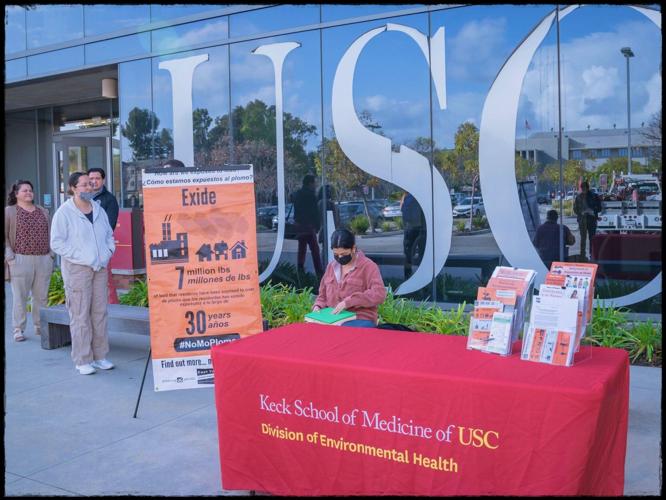
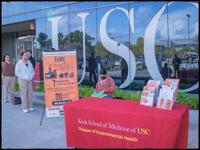
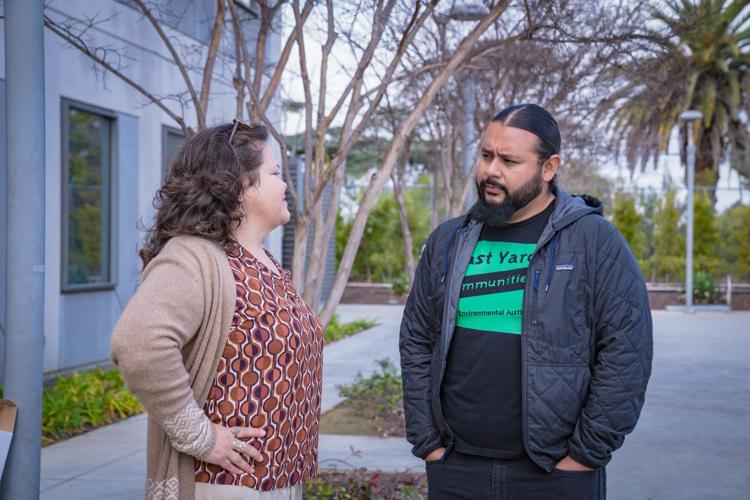
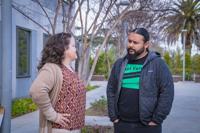
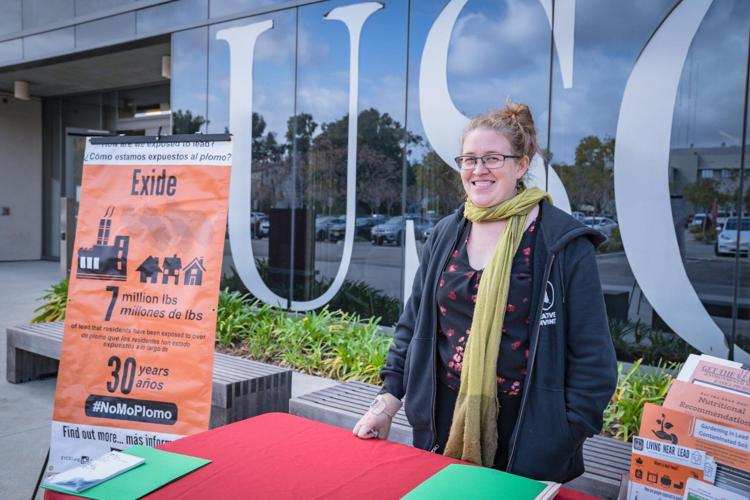
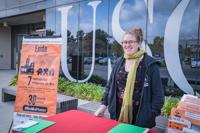



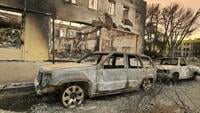




(0) comments
Welcome to the discussion.
Log In
Keep it Clean. Please avoid obscene, vulgar, lewd, racist or sexually-oriented language.
PLEASE TURN OFF YOUR CAPS LOCK.
Don't Threaten. Threats of harming another person will not be tolerated.
Be Truthful. Don't knowingly lie about anyone or anything.
Be Nice. No racism, sexism or any sort of -ism that is degrading to another person.
Be Proactive. Use the 'Report' link on each comment to let us know of abusive posts.
Share with Us. We'd love to hear eyewitness accounts, the history behind an article.